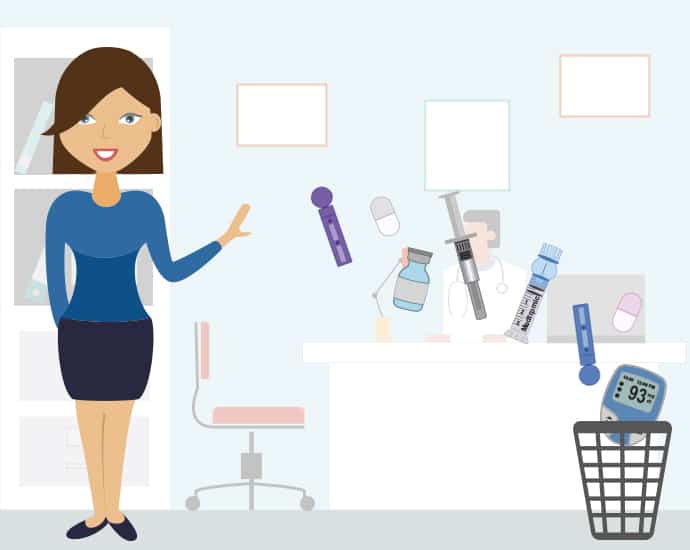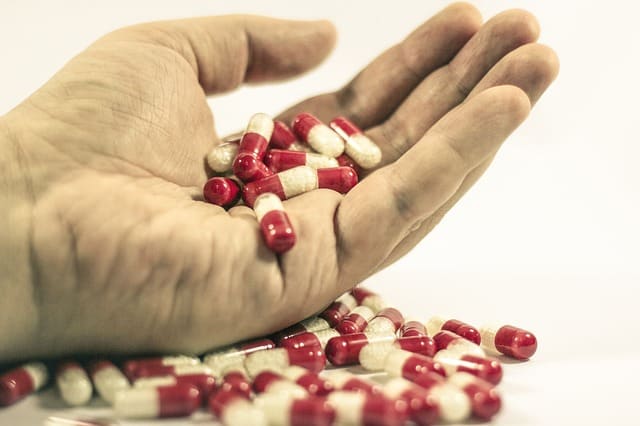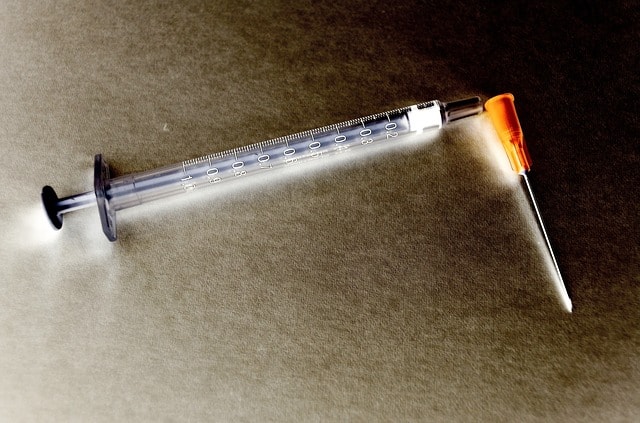Dreaming of a cure for diabetes: Fact or Fiction?
With tears in her eyes but a faint smile, Camp Director Maura Prescott, approached the podium.
Honestly, I never expected to be able to say those words in my lifetime. But here we are.

Tania Prescott read the scribbled notes from her mother’s speech some 25 years before. She had just read a news article online explaining how there are now only a few people left on the earth who are dealing with diabetes, and those people are controlled and living full and healthy lives with the Bionic Pancreas introduced the same year as the vaccine.
Everyone left dealing with diabetes are older with type 2 diabetes, who have not been able to keep the excess weight off, and subsequently have fatty pancreas. They are mostly managed by using the bionic pancreas, which keeps them complication free. They don’t have many problems with their disease, and the technology with the Bionic Pancreas allows them to keep their blood sugars in control without having to do much. They are not “cured,” per se, but they are pretty close to it.
All of the Type 1s were cured with the BCG vaccine. Type 2s could not always be cured in this way, due to the progressive degeneration of beta cells, the vaccine didn’t have the same effect on them, and they were seen to still lose beta cell function even after the vaccine. Scientists are still working to regenerate beta cells in Type 2 diabetes, as well as to prevent Type 2 diabetes, and research looks promising.
“My mother was an amazing woman,” thought Tania. “How wonderful to see them eradicate such a disease, and be a part of helping those who suffered from it. It’s why I went into research myself, and why I am working to sustainably regenerate beta cells in Type 2 Diabetes.”
Danny Prescott looked through her mother’s research. “This is amazing,” she thought. “My mother, back in 2081, helped complete the eradication of diabetes worldwide.” My mother and my grandmother spent their lives working with people with diabetes, and trying to develop a cure. Now there are not as many people living with diabetes. I would have liked to work with diabetes on my research. I am finding it is hard to cure cystic fibrosis.”
Contents
 Awakening
Awakening
Margaret Prescott awoke from her futuristic dream. Through the wonderful dream, she saw her daughter, granddaughter, and great-granddaughter moving through time to get to a cure. How fantastic that would be! She would no longer have to see her patients and friends, even family members with diabetes suffer. No longer would expenditures for diabetes be in the hundreds of billions of dollars. No longer would limbs be amputated from wounds that would not heal.
No more would the memory care unit be filled with patients with Alzheimer’s disease, a brain disease linked to insulin resistance.
There would be no more diabetes camps. Margaret would miss camp, but she wouldn’t miss the struggles she saw her campers and their families endure. She wouldn’t miss the times when they would have a low and end up on the floor. She wouldn’t miss the sheer terror in their parents’ eyes. She could be a counsellor at another camp for children with special medical needs.
There would always be someone who needed a nurse and certified diabetes educator with her experience. Yes, if there was a cure for diabetes, she would gladly give up her occupation, her life-blood, her passion. Her life would be complete. She could retire knowing she made a difference.
I recommend reading the following articles for more information:
The reality of a cure
Margaret had a wonderful dream, but what is reality? How far are we from a cure for diabetes? Some say the “Bionic Pancreas,” more widely known as the Artificial Pancreas, may be available to Type 1 diabetics as early as 2017. They have managed to cure diabetes in mice and the first phase of human trials with BCG vaccination, but the cure has only been temporary.
Though scientists can reverse Type 2 diabetes in some patients by inducing a loss of 1 gram of weight from the pancreas, by bariatric surgery or increased energy expenditure. However, they have not been able to do this with people with more advanced Type 2 diabetes. They have only been able to do this with people who have had diabetes for less than 5 years.
This is due to the gradual progression of the disease and continued beta cell destruction. Still, we must consider that it has only been since the 1920’s that insulin was discovered. Much headway had been made in diabetes. A disease that once could not be survived can now be lived with. Living healthy with diabetes is now possible, when once it was not.
Let’s examine the current research that is going on, and investigate the possibility of a cure for diabetes. How plausible is it? Will we be alive to see it? What does “cure” really mean, and what will a “cure” look like? Put on your time travel gear and let’s see where all of this can take us.
The American Diabetes Association looked at the estimated costs of diabetes, and they rose markedly between 2007 and 2012 from $174 billion to $245 billion in 2012. That’s no little increase. In fact, it’s a whopping 41% increase, which coincides with the national diabetes epidemic. The study looks at gender, race and ethnicity, and also looks at costs for individual states.
They break it down by actual costs, as well as lost productivity. The financial burden of diabetes includes hospital inpatient care expenses, medications, supplies, equipment, doctor’s visits and nursing home stays. Per person, the average person living their life with diabetes spends about $13,700 per year on medical care. This is more than two times what someone without diabetes would spend on medical care1.
Aside from all the money spent, there is the money to be made. Diabetes is big business. Products made specifically for diabetes abound. Perhaps those making money from products for diabetes would not fare as well if a cure were realized. But what of all the pain and suffering? The families, caregivers,
The families, caregivers, friends and patients would no longer have to suffer, and there would be no more complications. If the artificial pancreas were to be perfected, approved and marketed to Type 1 diabetics, then there could be less pain and suffering for these patients. If it were then expanded to include Type 2 diabetics, imagine the possibilities. Then there is the problem of the insurance approval hurtle, which seems to be such a big one to leap over.
Once the approval through the FDA comes, the “Bionic,” or artificial pancreas could become a reality. The coming election could have much to do with how quickly someone with diabetes is able to get approval through insurance. Will we have a single-payer system by then? Maybe, maybe not.
November will tell if the single-payer system will even be on the political agenda. If the Democrats win, Hilary Clinton could expand ObamaCare, but then we would need to have some legislation that requires insurance companies to pay for these new technologies. Currently, it’s difficult to get an insulin pump of your choice paid for through the current US insurance system.
It’s even difficult to get some of the new medications, such as the GLP-1’s that could help Type 2 persons to lose weight and obtain blood sugar control. Possibly on my soapbox, you say? Maybe so. We must all advocate for diabetes, and healthcare reform.
The Bionic Pancreas
It’s interesting to read about one of the researchers who is racing against time to get the “Bionic Pancreas” on the market. His son has Type 1 diabetes, and he wants him to be able to take it with him when he starts his freshman year of college. His son goes to college in 2017. Will he make it? Time will tell. It’s determination like this that will get the job done. Currently, 40 clinical trials are going on where subjects are wearing an artificial pancreas that is made up of an insulin pump, a continuous glucose monitor, and new android app technology.
The app on an android phone is used to receive a signal from the continuous glucose monitor and relay a message to the insulin pump via Bluetooth technology. Nothing short of amazing. At this point, none of what is going on depends upon the person with diabetes. They don’t have to do anything. The CGM talks to the pump, and the pump delivers the correct dose of insulin. So this would be the closest thing to having a working pancreas without having a working pancreas.
Testing for the “Bionic Pancreas” is going on at Diabetes summer camps, and other real world situations currently around the world. From the first prototypes of the artificial pancreas that was a huge and bulky contraption with wires sticking out the back, that was connected to a big bulky computer, we have sized down to what is currently being used in clinical trials.
We have figured out a way for the CGM to talk to the insulin pump and make the adjustments without the patient having to for the most part. We are almost there. Will we make it by 2017? With knowledge of the FDA process, and knowledge of the current insurance system, that seems unlikely. We shall see.
Dual hormone system
The success of the artificial pancreas may hinge on whether or not researchers are able to come up with a dual hormone system. The body regulates low blood sugars with glucagon normally, so a “perfect” artificial pancreas would simulate what is actually going on in the body by giving the person with diabetes glucagon for hypoglycemia.
The problem with using glucagon now is its short chemical half-life, and scientists are trying to come up with glucagon that can at least remain stable for a few days. Xeris has developed a more stable glucagon that has worked in pigs for 3 days. Progress indeed!
Faster insulin
Researchers are also looking to develop an insulin that has a more rapid reaction in the body than what is currently available to be used in the “Bionic Pancreas.” This will help to make the artificial pancreas virtually hands free for the person living with diabetes, and that is pretty close to a cure, giving lifelong Type 1 diabetes sufferers reason to look toward the horizon and the future.
There are studies currently going on that are trying to develop a more rapid version that is inhaled so that post meal time blood sugars are better controlled. Roche has developed a Diaport in the experimental phase. It allows insulin to be absorbed more quickly.
Still, more research is being done on continuous glucose monitors, to get rid of the lapse in time that occurs when glucose levels are measured in the fluid around the body’s cells2. Verdict in – we may look to see the artificial pancreas in 3-5 years. Come on 2020, you could be our year!
Vaccine for Type 1 diabetes
The Faustman Lab at Massachusetts General Hospital are only interested in curing Type 1 Diabetes. They strive to reverse Type 1 in advanced stages. Currently, they are looking at whether or not a certain bacteria called bacillus Calmette-Guerin (BCG) can get rid of T-cells that destroy the pancreas in people with Type 1 diabetes. BCG is not new.
It was used in development of other vaccinations in the past, and what it does is it elevates Tumor Necrosing Factor (TNF), that may have the ability to destroy T-cells that attack the pancreas. Clinical trials are underway, and have shown promise that the vaccine can, if only briefly, destroy these damaging T-cells. Funding is currently going on for a 2nd phase in this promising trial3. Getting closer? Let’s see.
If you are interested in more diabetes related articles read these:
Type 2 cure?
What about Type 2 diabetes? Are we any closer to reversing it, and more importantly, keeping it reversed? We have seen the “reversal” occur using bariatric surgery. We have seen it reversed with diet, and increased exercise. But is this permanent? One recent study at Newcastle University in the United Kingdom, saw reversal of Type 2 diabetes with a single one gram loss of fat from around the pancreas, or what we call “visceral fat.4” Perhaps with this promising study, combined with the removal of Trans fats from the food chain, and increased attention to diet and exercise to prevent Type 2 diabetes, we can get there.
We can dream, but we must try to fulfill the dream of a cure. The countless suffering of the families and people touched by diabetes is staggering. So for now, though we shouldn’t give up on the idea of a cure, we should focus on what we know, and manage our best until the day comes when we can stand up and say, “We are cured.” It is comforting to know that there are those that are working very diligently and giving their lives to this research with such dedication.
They will be the names written down in history one fateful day. Until then, dreamers, dream on! Advocate with your legislature to enact legislation that is pro-diabetes. Let your voices be heard. Write your congressman, whatever it takes.
We can work to advocate for people living with diabetes so that their insurance companies will pay for needed devices and supports. We can pave the way now for things to be easier for us to get an artificial pancreas through insurance when one does become available.
We can give to the Juvenile Diabetes Research Foundation (JDRF), and the American Diabetes Association (ADA), so that they can fund more research projects to bring us closer to our ultimate goal, a cure for all types of diabetes! A day when we can tell our children and grandchildren about this disease that no longer exists! Oh, happy day!!! Until then, don’t give up the faith.
TheDiabetesCouncil Article | Reviewed by Dr. Sergii Vasyliuk MD on June 10, 2020
References
- http://www.diabetes.org/diabetes-basics/statistics/infographics/adv-staggering-cost-of-diabetes.html
- http://www.diabetesforecast.org/2014/mar/the-artificial-pancreas-aces.html
- https://www.ncbi.nlm.nih.gov/pmc/articles/PMC4600067/
- https://www.ncbi.nlm.nih.gov/pubmed/24931572
- https://www.ncbi.nlm.nih.gov/pubmed/26850709
- https://www.ncbi.nlm.nih.gov/pmc/articles/PMC5902803/
- https://www.ncbi.nlm.nih.gov/pmc/articles/PMC6013479/
- https://www.ncbi.nlm.nih.gov/pubmed/9218754
- https://www.ncbi.nlm.nih.gov/pmc/articles/PMC3414482/
- Rya s, Kodama s, Ryu K, Schoenfeld DA, Faustman DL. Reversal of established autoimmune diabetes by restoration of endogenous beta cell function. J Clin Invest. 2001; 108 (1): 63-72
- Wood, Chris. Losing a single gram of fat in the pancreas can reverse Type 2 diabetes. December 8, 2015/


 Awakening
Awakening





